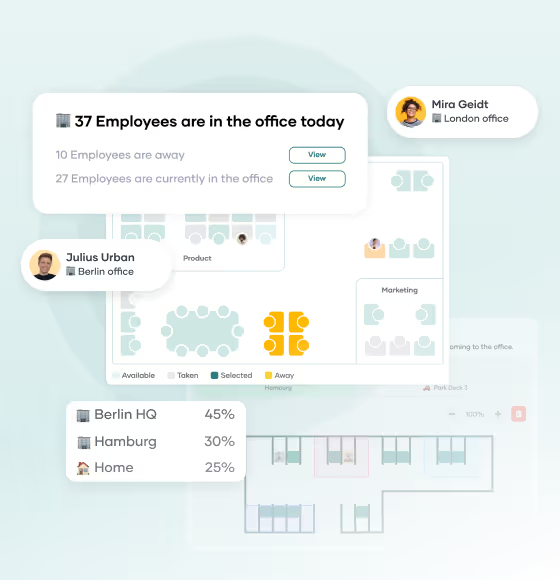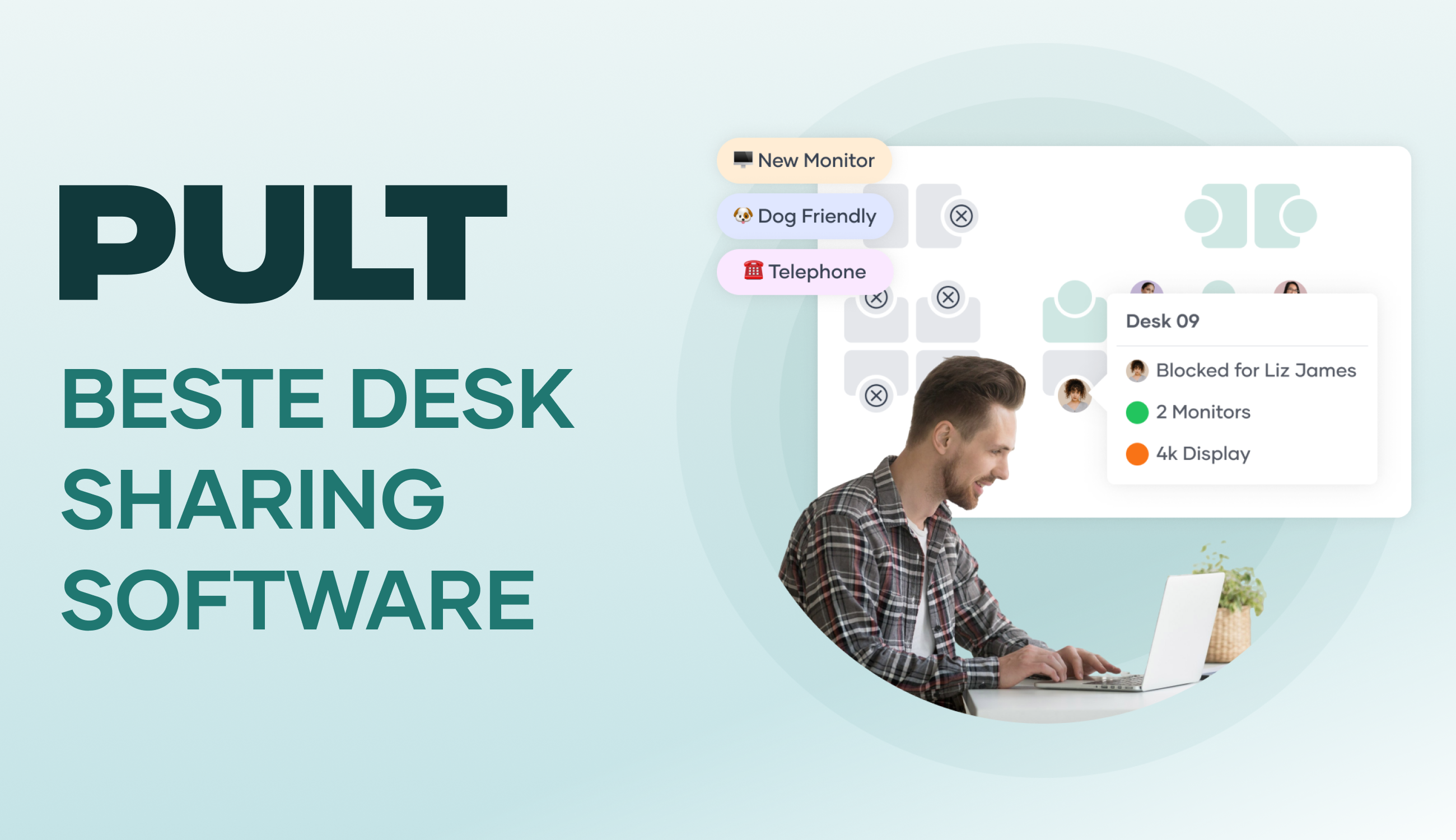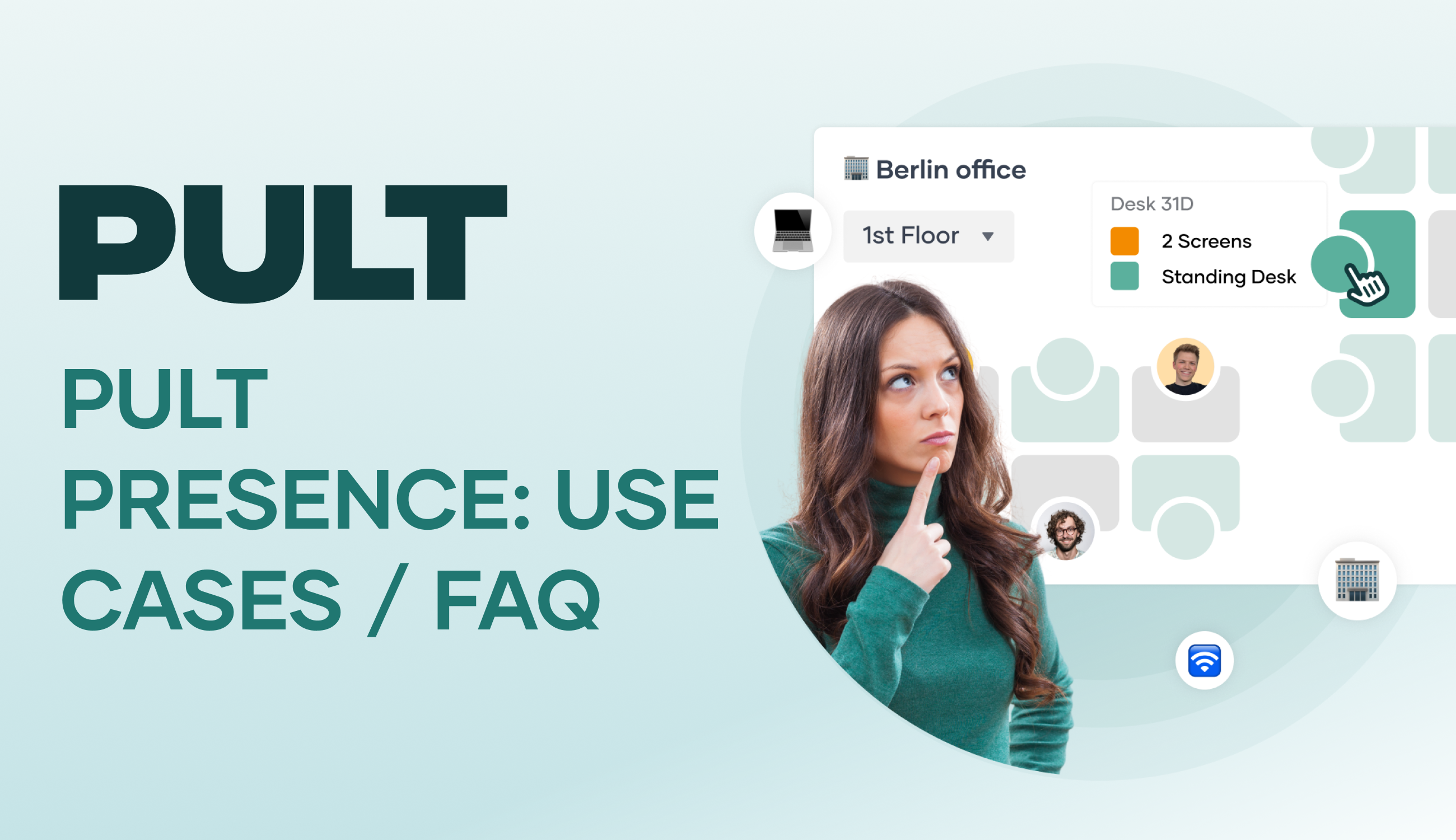Understanding hybrid working and implementing it with your team

Understanding hybrid working and implementing it with your team
The mix of remote and in-person work is now a reality for many teams, but it also raises new questions: Who is in the office and when? Who is working from home? And how do you ensure that collaboration, communication and culture don't fall by the wayside? In this article, you'll learn what hybrid working is, what it entails and what new structures it requires.
Meaning: What is hybrid working? (Definition)
Hybrid working, often referred to as hybrid work or hybrid working model, is a combination of on-site and remote work. Colleagues work partly in the office and partly in other locations such as their home office, a co-working space or on the road. How exactly this is organised varies greatly:
- The most suitable option depends largely on the type of work, the coordination required within the team and the company structure. Creative project work, for example, often benefits from regular presence, while focused individual work is often better done remotely.
- Fixed office days (e.g. Monday & Wednesday in the office)
- Free choice depending on position, project phase or personal agreement
- Central control or team-based agreements
- The office as a place of work or a meeting place with a focus on meetings and collaboration
Hybrid working is not a rigid state, but a framework for organisation. The model can vary greatly depending on the industry, company size and team structure. One thing is clear: without binding rules and the right equipment, friction can quickly arise.
{{hint-box}}
Hybrid working from different perspectives
For employees
More freedom also means more self-organisation. If you are free to choose where you work, you need your own routines: How do you remain available to colleagues? How do you separate work and private life? How do you get information when you are not in the office? Many appreciate the newfound autonomy, but also report problems with setting boundaries or feeling like they ‘don't belong’.
For managers
Leadership in a hybrid context is no longer about physical presence, but about trust, communication and clear goal orientation. Visibility does not come from sitting at your desk, but from commitment and feedback. At the same time, the challenge remains: how do you get everyone on board without constantly checking up on them or breathing down their necks?
For HR and organisation
Recruiting, onboarding, personnel development: you have to rethink all of this. Processes that used to run automatically in the office now have to be planned and designed more consciously. Onboarding requires new formats in hybrid teams: digital welcome sessions, accompanying induction plans with on-site and remote contact persons, and hybrid feedback meetings in the initial phase.
The corporate culture is also being put to the test: How do you create a sense of belonging and cohesion when teams see each other less often in person? And how do you organise the flow of information when not everyone is working in the same place at the same time?
For IT and office management
The demands on IT security, network technology and devices are increasing significantly. Added to this is the question: Who is in the office and when? Are there enough workstations? How can the use of meeting rooms be coordinated?
Typical problems with hybrid working
Hybrid working brings noticeable advantages, but also specific pitfalls. Some of the typical problem areas are:
- Communication gaps: If you are not in the office, you may not receive certain information. Without clear tools and structures, different levels of knowledge arise.
- Team imbalance: Those who are on site more often are heard more quickly. Remote employees run the risk of being less involved.
- Spontaneity vs. space: Without planning, rooms or spaces may not be available – or the team may be in the office for a meeting, but no one else is there.
- Too many tools: When everyone uses a different system, collaboration becomes tedious. Integration is crucial.
- Lack of rules: It is often unclear who is working where and when. This causes frustration and organisational effort.
Problems from the employee's perspective
- Blurred boundaries between work and leisure time: Some employees find it difficult to switch off after work when they have already spent the entire day at home working. The flexibility of working from home often leads to a blurring of the boundaries between work and private life, which can result in stress and exhaustion.
- Feelings of guilt when not working to capacity: Some feel guilty when they are less busy in their home office, even though they are fulfilling their tasks. These feelings of guilt can lead to excessive work and ultimately to burnout.
- Social isolation and lack of team dynamics: The lack of personal interaction in the office can lead to a feeling of isolation. Spontaneous conversations and informal interactions that contribute to team dynamics are missing in the home office.
- Inadequate working environment at home: Not everyone has a suitable place to work at home. Noise, a lack of ergonomic furniture or inadequate technology can impair productivity and affect your mood.
To address these issues, hybrid work requires a functioning organisation. Just as constant attendance can be oppressive, the perceived freedom of working from home can also have a negative effect. A well-structured, hybrid way of working can offer your team the right amount of variety.
What do you need for hybrid working?
A hybrid model only works if certain conditions are met:
- Trust-based leadership: No micromanagement of individual activities, but clearly stated expectations and regular coordination. This also includes trust and role modelling.
- Rules for collaboration: Who works when and where? How do you stay in touch? What software do you use?
- Clear planning: Who is on site and when? What spaces and rooms do you need? Are there enough workstations available when attendance is high?
- Technical equipment: Laptops, VPN, secure connection, functioning video technology, cloud-based software for collaboration (e.g. for project management or documentation), central cloud storage for location-independent access, professional video conferencing software with a stable connection and functions for group work, software for desk booking and attendance overview, both in the office and remotely.
- Cultural maintenance: Regular anchor points, feedback rounds, established team formats to prevent a sense of belonging from being lost.
Examples of hybrid working
Example 1: Medium-sized company with fixed office days
A software company has introduced two fixed office days per week, with each team deciding for itself how to organise the rest of the week. Workstations are booked via software, as are meeting rooms. Permanently assigned desks are replaced by workstations that are used on a rotating basis. This frees up space for quiet areas and break rooms, which make working on site more attractive.
Example 2: Remote-first with optional office
A start-up relies on voluntary office days. Those who come book themselves in digitally. Access, workspaces and meeting rooms are booked and allocated as required. The reception is not permanently staffed, but is digitally controlled via a central platform. Employees appreciate the flexibility and see the office as a welcome change of scenery.
Example 3: Administration with a hybrid shift model
A government agency uses hybrid models for administrative staff. Teams share rooms, with weekly planning in advance. A room and access booking system has been introduced to ensure planning reliability. The most important effect: greater predictability with the same level of availability.
{{cta}}
Implementing hybrid working in your company
If you want to establish hybrid working, it's not just about more freedom in choosing where to work or the advantages of working from home. It's about creating structures in which the flexibility gained does not lead to chaos, but to greater satisfaction, productivity and clarity.
To achieve this, colleagues' attendance and absence should be transparent for everyone. You also need to be able to plan the use of workstations and meeting rooms and have a technical infrastructure that grows with you instead of slowing you down.
Implemented correctly, hybrid working can improve many things: you relieve the strain on your office, reduce vacancy rates and create spaces that can be used for completely new ideas. You strengthen personal responsibility within the team without losing sight of collaboration.
How PULT makes hybrid working easier for your team:
- Attendance overview: You can see at a glance who is in the office today, across teams, per location, in real time.
- Workplace booking: Employees can reserve their own space in the office, including capacity overview and according to individual preferences.
- Room planning and booking: Meeting rooms can be booked and thus reserved. Specify who has access to which rooms.
- Cross-location control: Everything can be managed centrally – regardless of how many offices or user groups are involved.
The better hybrid working is organised, the better it will be accepted by the team. The respective disadvantages of on-site and remote working are also partly eliminated or significantly mitigated.
Hybrid working – frequently asked questions and answers
What is the difference between remote, mobile, and hybrid work?
Remote work means working permanently or on a daily basis from outside the office. Mobile work is location-independent and linked to appropriately mobile activities. Hybrid work is a combination of office and remote working hours.
How can I organize hybrid work in a team without losing track of everything?
It is important to have fixed rules, a shared calendar, and transparency regarding attendance. Planning and overview software helps to enable coordination without control.
What kind of rules does a hybrid model need?
Rules should specify when and how often attendance is expected, how communication will take place, and which tools will be used. Implementation is usually the responsibility of HR or team leaders, ideally in consultation with employees.
How can I recognize overload in a hybrid work environment?
Warning signs include unavailability, withdrawal from meetings, or declining participation. Managers should consciously ask questions and support clear boundaries, for example through pre-agreed offline times and corresponding times of presence.
How can hybrid work be reconciled with corporate culture and leadership?
Hybrid models require conscious cultivation of culture: regular meetings, clear communication, and leadership on an equal footing. Culture does not arise from tools, but it can be strengthened through good organization.
A new hybrid workplace experience is coming. Start Now. 🎉





















.avif)





